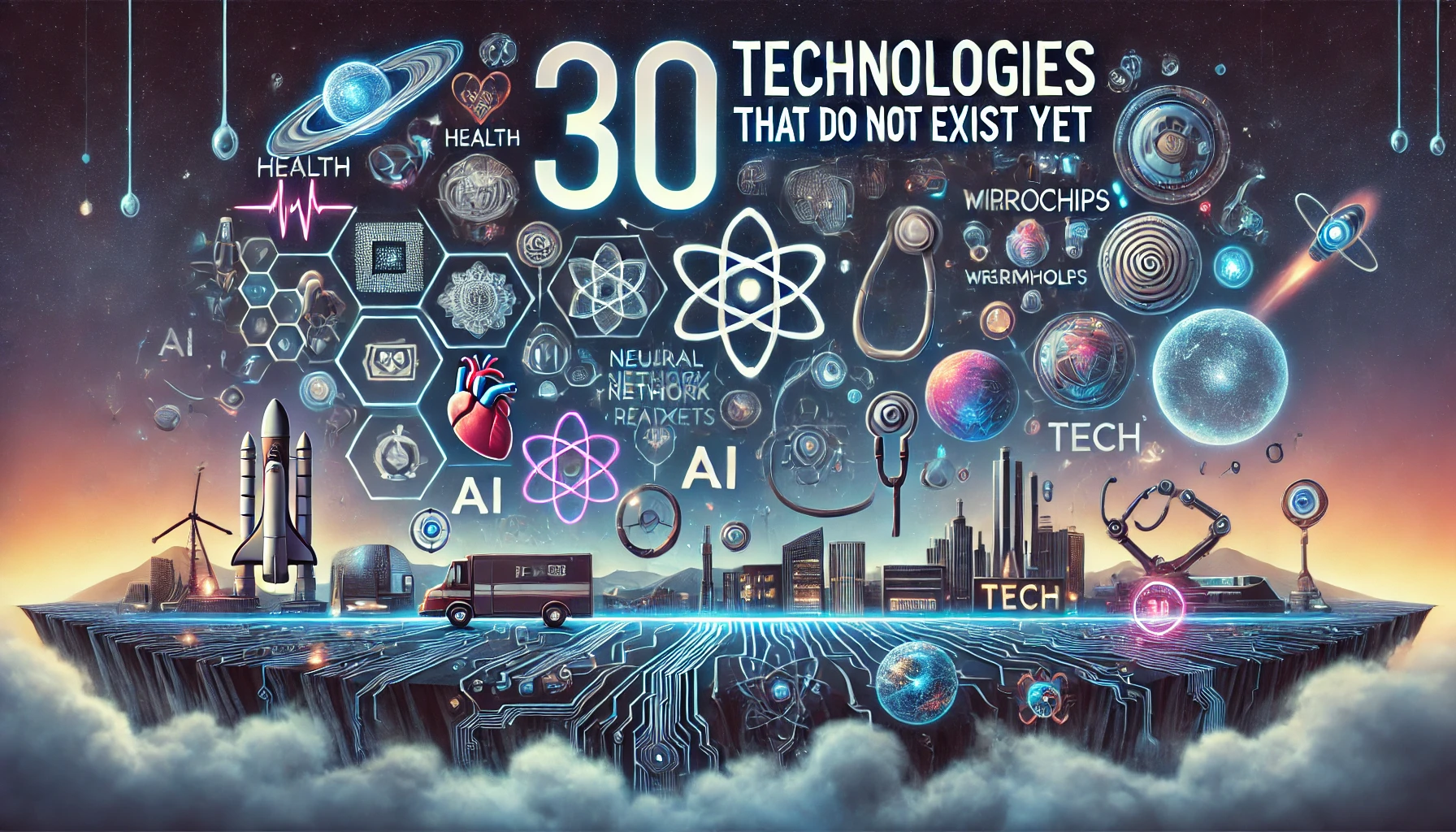Thanks to AI, we’ve predicted when impossible technologies-30 of them-will at last become a reality. Let’s take a closer look into our forecasted timeline of those game-changing innovations that will lead you to the ultimate superpower.
Here’s below the full list of the top 30 things that do not exist yet, sorted by the likely year of creation, with their current status of development mentioned between brackets underneath each of them:
- Cure for HIV/AIDS – 2035
(Significant progress has been made; a cure could be close) - Complete virtual reality (VR) – 2035
(VR is advancing rapidly and could become indistinguishable from reality soon) - True artificial organs – 2035
(Organ bioengineering is developing quickly, and fully functional artificial organs could be here soon) - Cure for cancer – 2040
(Major advancements in personalized medicine could make this a reality) - Universal translator – 2040
(AI language translation is rapidly improving, but perfection may take longer) - Quantum computers for everyday use – 2040
(Quantum computing is making progress, but consumer-grade models are decades away) - Cure for Alzheimer’s – 2040
(New research offers hope for breakthroughs within the next couple of decades) - Personalized medicine for all diseases – 2045
(Genomic and AI-driven medicine will likely make this a reality within decades) - Human settlement on Mars – 2050
(NASA and private companies are aiming for manned missions in the 2030s) - Fully autonomous robots – 2050
(Autonomous systems are improving, and robots could become fully independent by mid-century) - Nanobot medicine – 2050
(Nanotech is advancing, and medical nanobots could become common by mid-century) - Comprehensive AI ethics enforcement – 2050
(As AI becomes more pervasive, global regulations will likely follow by mid-century) - Artificial General Intelligence (AGI) – 2060
(AGI development is complex, but growing exponentially) - Universal wireless power – 2060
(There’s some progress, but delivering power over long distances remains a challenge) - Fusion energy – 2070
(Fusion is incredibly challenging, but ongoing research could yield results in the next decades) - Invisibility cloak – 2070
(We have some materials with cloaking properties, but full invisibility is a longer-term goal) - Self-sustaining space habitats – 2070
(Necessary for long-term space colonization and may emerge late this century) - Global climate control – 2080
(Geoengineering and climate tech may stabilize the climate later this century) - Human cloning – 2080
(Ethical and regulatory concerns are likely to slow this, even if the technology is possible earlier) - Space elevators – 2090
(Designs exist, but materials and logistics are enormous challenges) - Artificial gravity – 2100
(We might crack this as part of advanced space exploration) - Cold fusion – 2100
(If possible, cold fusion might be one of the last breakthroughs in clean energy) - Mind control technology – 2120
(Brain-computer interfaces are growing, but full mind control will take much longer) - Immortality – 2150+
(Far-off possibility, likely centuries away) - Mind uploading – 2200+
(Depends on advances in neuroscience, brain mapping, and computing) - Space-time travel – 2250+
(Would require breakthroughs we can’t yet foresee) - Teleportation – 2300+
(Quantum teleportation exists on a small scale, but human teleportation is far beyond reach) - Time warp – 2350+
(Explored in theoretical physics, but practical understanding is centuries away) - Faster-than-light travel (FTL) – 2400+
(Requires breakthroughs in physics that are currently beyond reach) - Interstellar travel – 2500+
(Technology to reach other star systems is yet to be developed)
These speculative years provide an approximate timeline based on current advancements and the difficulty of achieving each goal. The list includes milestones that could revolutionize humanity and science if realized, and we are certain that artificial intelligence will help speed up research to make it happen.
So which one is the most important of them all? Immortality of course!

Ideally if you can live long enough through the time journey towards the invention of human Immortality, when it will be achieved, you shall be able to live forever and see all other advancements happening one after another.
To start with you need to ensure you keep healthy, try not to catch any disease that is not curable, based on the current status of technology. If you don’t die in an accident you would need to be watchful of the below two milestone being achieved and obtain them as soon as possible:
Slowing down aging significantly:
- By 2040–2050: We might be able to slow down aging significantly. Research into anti-aging therapies, such as senolytics (drugs that target aging cells), gene therapy, and advancements in regenerative medicine, is progressing rapidly. Current developments in understanding the biology of aging could lead to treatments that slow down the aging process within a few decades.
Reversing aging:
- By 2070–2100: Reversing aging is a much more complex challenge. While there are early successes in reversing aging in lab animals (such as reprogramming cells or extending their life span), the leap to reversing aging in humans would require enormous breakthroughs in cellular reprogramming, stem cell therapies, and gene editing. Reversing aging could still be a possibility toward the end of the century, depending on the pace of scientific discovery.
This plan should allow you to live at least till year 2100 when immortality will become a reality. At that stage, if you have enough wealth, by year 2150 it will become affordable for everyone to get: bingo!

